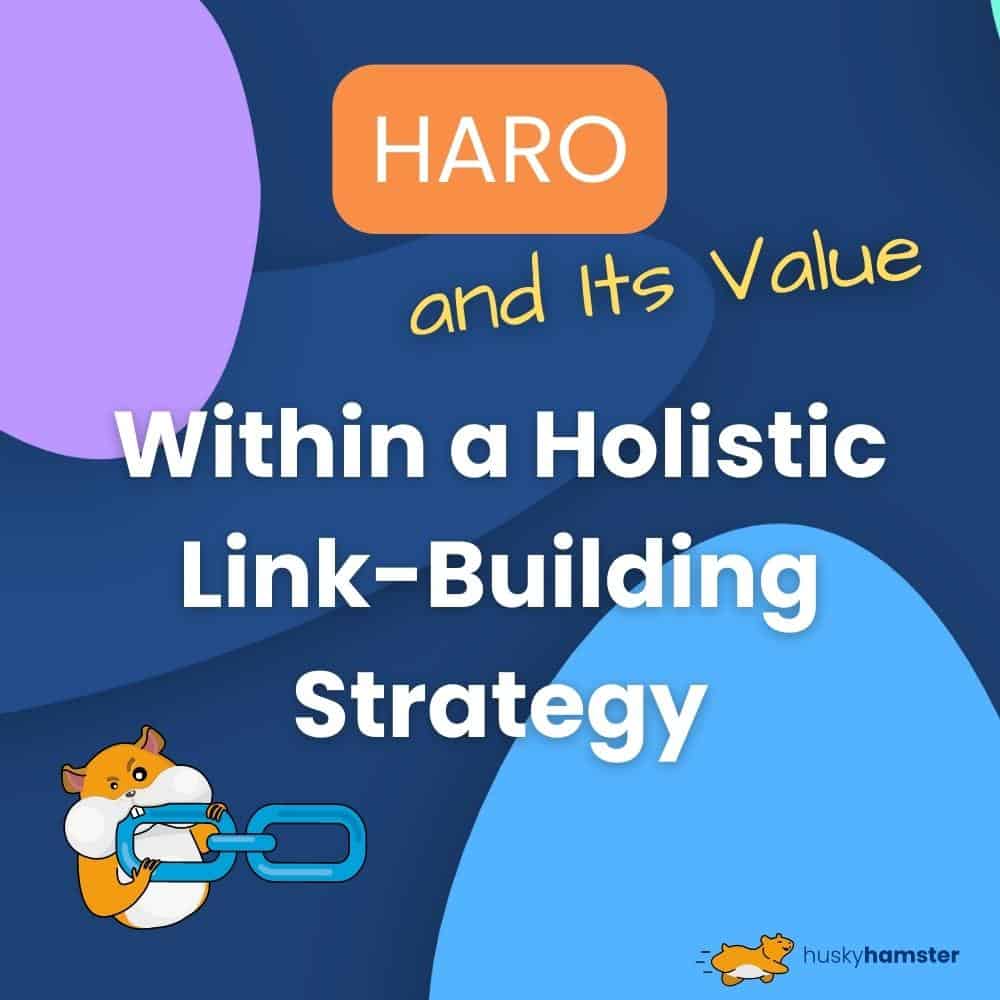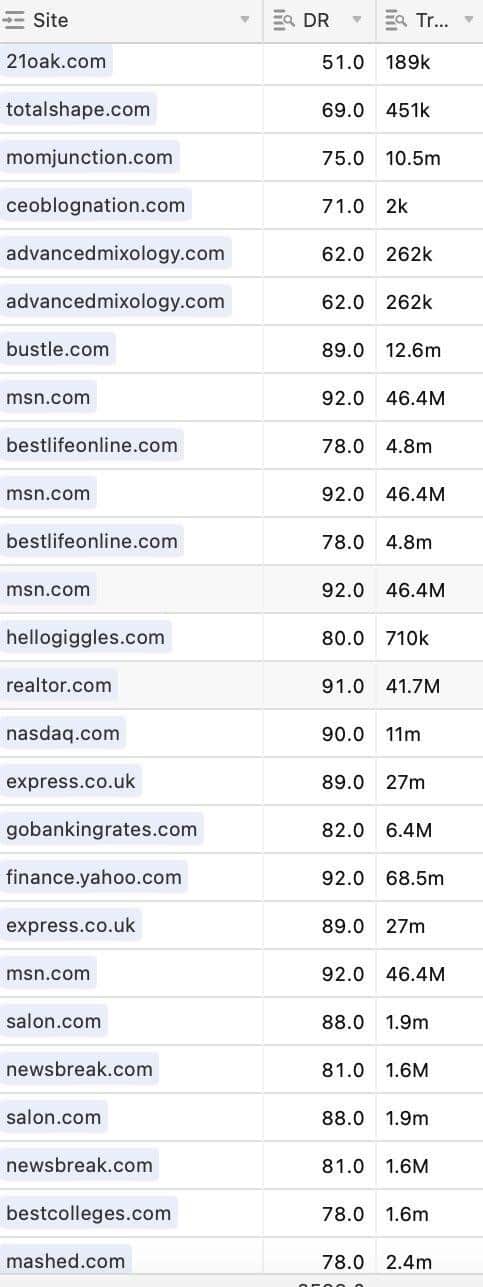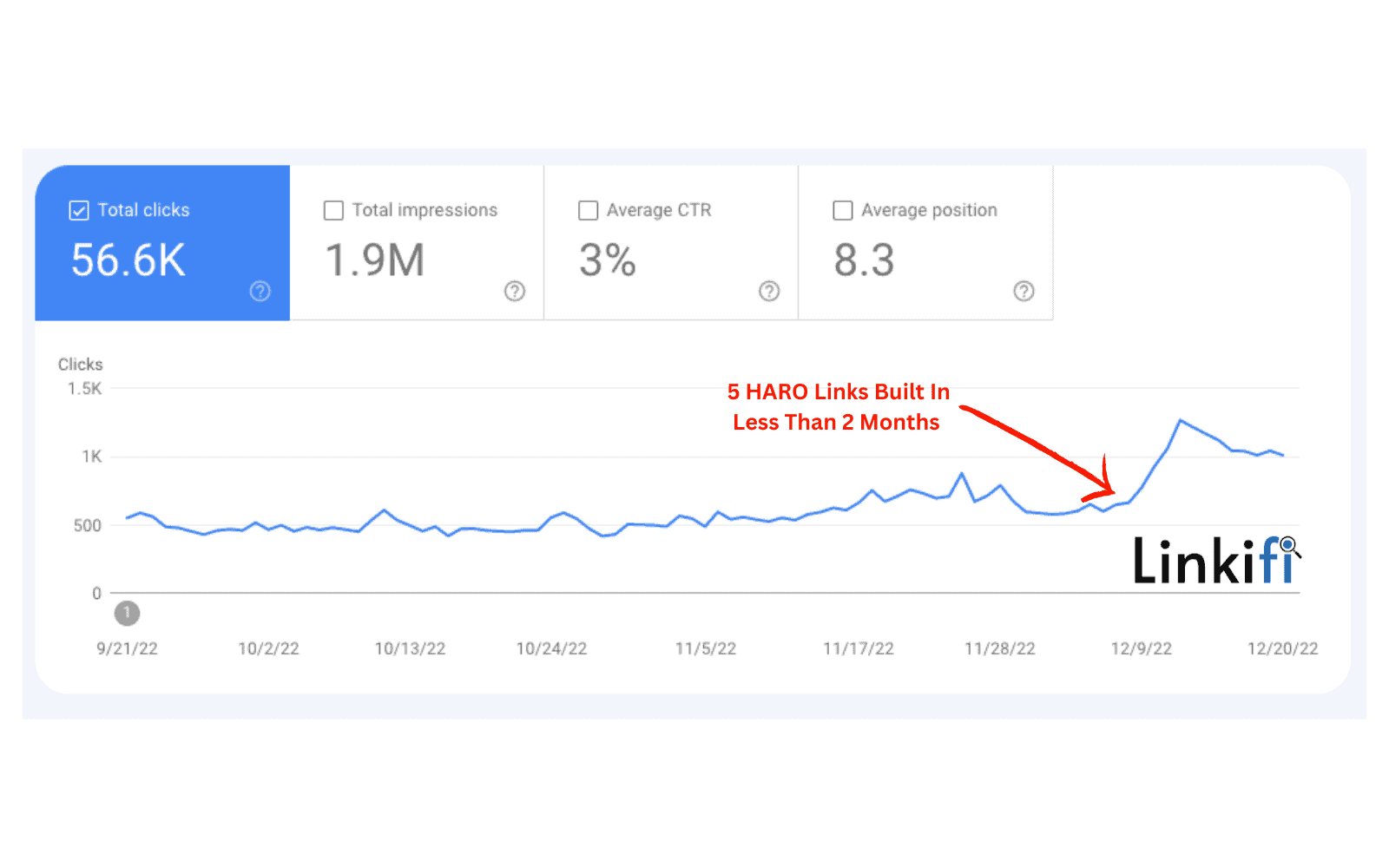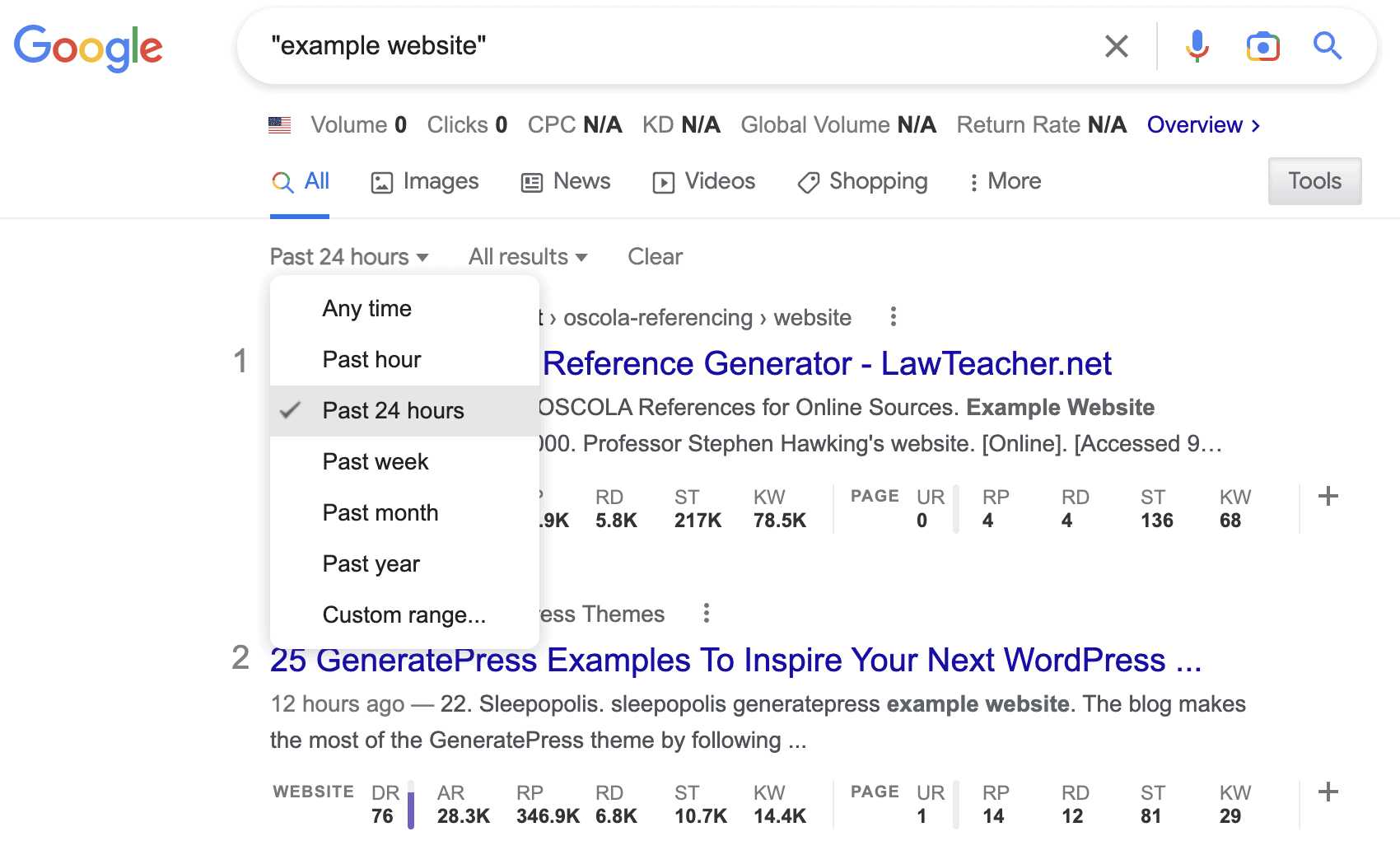
Table of Contents
HARO and Its Value Within a Holistic Link-Building Strategy
HARO Defined
The Current HARO Landscape
Why Are HARO Links Considered Premium?
How Much of an Impact Can HARO Links Make?
Getting Started With HARO
Profile Set-Up
Expert Positioning
Email Usage and Pitch Templates
Publication Selection
Tracking Mentions
DoFollow/NoFollow/Unlinked Conversions
Summary
HARO Defined
HARO (Help A Reporter Out) is a platform that connects journalists and bloggers with sources and experts in various fields. Journalists can submit requests for information, quotes, or interviews on specific topics, and sources can respond with their insights and opinions.
It was founded in 2008 by Peter Shankman, and it has since become a popular tool for reporters and bloggers to find sources for their stories. The platform sends out three daily emails to subscribers with a list of requests from journalists on a wide range of topics, from business and technology to health and lifestyle.
The platform is free for sources to use. It is a great way for experts and professionals to build their credibility and gain media exposure by contributing to articles and stories in their area of expertise.
The Current HARO Landscape
Although there are suggestions that HARO's prime time has passed, I would argue that it has undergone a sort of revival in recent years. Initially, HARO was utilized for its intended purpose of linking journalists with credible sources. However, with the discovery of link-building prospects by SEOs, it was subsequently taken over by numerous deceitful industry manipulators.
Recently, I believe the standard of publications employing the platform has reached an unprecedented level. Despite the fact that unethical SEO practitioners still utilize the platform, this presents an opportunity to distinguish oneself through high-quality pitches from highly qualified experts. As a result, one could argue that obtaining exceptional links from the world's best websites is now easier than ever.
Recently, we had one of the best weeks ever for our clients, landing over 65 links on massive websites. Here is a screenshot showing a sample:
Why Are HARO Links Considered Premium?
The primary reason why HARO links carry unparalleled prestige is that they are obtained through editorial means, rendering them unobtainable through direct purchase from the publications or writers/journalists themselves (although services like ours can provide assistance in acquiring them). The inherent truth is that these links are frequently featured in the largest publications in the world, boasting DR ratings that often exceed 70 and organic monthly traffic figures that amount to hundreds of thousands or even millions. As a result, Google highly regards these websites and will value the links that originate from them.
How Much of an Impact Can HARO Links Make?
In developing an effective link strategy, HARO links serve as an integral component. Although journalists will typically provide homepage and branded anchored links 99% of the time, these links fall under a category that can have a substantial overall domain impact on traffic, EAT (Expertise, Authority, and Trustworthiness), and SERP positioning.
Take a look at this client’s website traffic after they purchased [and we built] just 5 HARO links over a period of just under 2 months:
Moreover, engaging with HARO is likely the safest course of action for those who harbor concerns about the possibility of Google penalties stemming from unnatural link-building practices. Since these links are editorially earned and appear on the world's largest websites, the likelihood of incurring a manual or algorithmic penalty from Google is virtually non-existent. One can confidently build these links without risk, thereby ensuring the longevity of their online assets for years to come.
Getting Started With HARO
Before embarking upon your HARO link-building strategy, I will outline the principal areas of focus that warrant your attention. I will also share some of our industry secrets to help you reduce the time spent on wasted pitches, enhance the probability of piquing the interest of journalists, and, ultimately, secure that all-important backlink from a top-tier publication.
Profile Set-Up
How you present yourself and your business through your profile is crucial for the HARO pitching process. Journalists are searching for absolute experts in their field to improve their articles with valuable insights. To achieve success, it is essential to maintain a consistent and credible image across all the channels you use to represent yourself. This includes your main website, social media profiles (especially LinkedIn), and any other online presence you may have. Your messaging should be coherent and visible to ensure that you appear as a trustworthy source of information. Remember that the quality of your profile is the key to getting backlinks and features, so make sure it stands out.
Expert Positioning
To increase your credibility in the online world, it's important to highlight your achievements and qualifications. This includes any higher education accolades, industry awards, and professional qualifications related to your field. Doing so can strengthen your expertise and demonstrate to journalists that you're qualified to provide valuable insights on specific topics. This is especially crucial as the HARO landscape becomes increasingly competitive. By providing clear and recognizable signals of your credibility, you can cut through the noise and establish yourself as a go-to source of information.
Email Usage and Pitch Templates
At Linkifi, we use a Google Workspace account because we handle multiple clients at once. But if you're a solo HARO user, a personal or domain email should work just fine. However, it's still a good idea to set up a separate inbox for your HARO activities, and a domain email can ensure a more professional impression.
Pitch templates are pre-written introductory and concluding paragraphs that can save you time when crafting your HARO pitches. While we can't reveal our company's exact templates (they're an industry secret), we can share the essential elements of any effective pitch template.
Make sure your pitch template includes the following:
- Your name and position with your company,
- Your company name and URL,
- Your expertise (broadly speaking),
- Your awards, qualifications, accolades, etc.,
- Previous large publications you have been featured,
- Contact information,
- Polite closing sentiment offering to assist further.
Think of your pitch template as a flexible document that can be adjusted for each HARO query you receive. Your template should initially include a broad range of expertise that can then be tailored to fit the specific nature of the query.
Publication Selection
HARO remains a great way to connect with journalists from major publications. However, it's important to note that the service doesn't thoroughly vet the publications, so a significant number of irrelevant queries is being submitted on a regular basis.
To ensure that your replies to journalists and the publications they represent benefit your business, it's crucial to assess whether the sites are suitable for your needs. At Linkifi, we use Ahrefs DR metric and organic monthly traffic as a starting point for evaluation. We also consider various other factors before deciding which publications to pitch.
There are several key areas of concern to consider when selecting a publication to pitch. For example, you should determine whether the site has historically offered links and whether they tag links as nofollow or dofollow, which will impact your overall link-building strategy. Additionally, some journalists and publications may not link to sources initially but may do so upon follow-up. It's helpful to know which publications and journalists typically follow this practice.
To assist you in identifying winning sites and streamlining the pitching process, we offer free lifetime access to our agency-grade database of sites containing all of this information. This can save you significant time and help you focus on worthwhile pitches.
Tracking Mentions
An often overlooked aspect of a comprehensive HARO strategy is what happens after your pitches have been sent. While Ahrefs is a useful tool for tracking links, it can be time-consuming and miss numerous opportunities to convert unlinked mentions into links – a process best completed in the hours and days after articles are published.
You will need to use additional tools outside of traditional link trackers to ensure you don't miss any potential link opportunities. At Linkifi, we utilize two free alert tools to track mentions and conduct a daily Google search using search operators.
The two alert tools we recommend are:
You should set up three primary alerts for each domain you are tracking. For example, if you are pitching HARO for John Example, CEO of ExampleWebsite, the alerts we would set up are:
- “John Example”
- “Example Website”
- “ExampleWebsite”
In addition, we suggest conducting a daily Google search using the same search operators listed above. You can adjust the settings in Google to display results from the past 24 hours and run the search at the same time every day:
DoFollow/NoFollow/Unlinked Conversions
Don't give up if you have gone to the trouble of crafting an engaging pitch and a journalist quotes you but doesn't include a link. You may be missing out on valuable link juice. At Linkifi, we have developed a strategy and outreach template that converts unlinked mentions into links about 50% of the time.
To take advantage of these opportunities, you must ensure that your tracking is accurate. Additionally, we have had a success rate of approximately 20% in reclassifying nofollow links as dofollow with straightforward but effective email outreach to relevant journalists and publication editorial departments.
Summary
In summary, HARO can be essential to a comprehensive link-building strategy. The platform connects sources and experts with journalists and bloggers, creating media exposure and credibility-building opportunities.
It has undergone a revival in recent years, with more high-quality publications employing it. With a focus on expert positioning, pitch templates, and publication selection, businesses can increase their chances of securing valuable backlinks from top-tier publications.
At Linkifi, we offer a range of services to help streamline the HARO pitching process, from the evaluation of publications to the tracking of unlinked mentions and conversion to dofollow links. Our agency-grade database of sites houses essential information that can reduce the time spent on wasted pitches and help you focus on worthwhile opportunities. By following the best practices outlined in this article, businesses can build their online assets and establish themselves as trusted sources of information in their field.
We also offer a comprehensive HARO MasterClass course where you can learn our exact step-by-step process for securing hundreds of HARO links each month for our clients.









